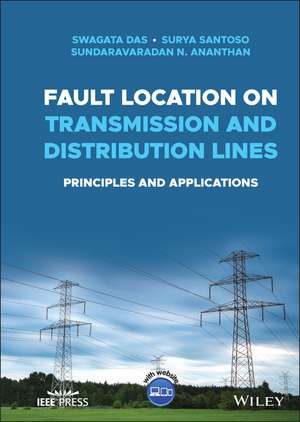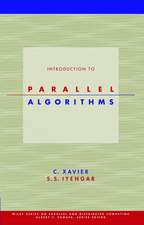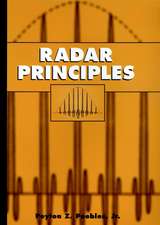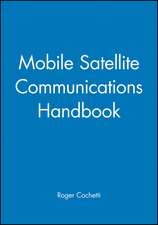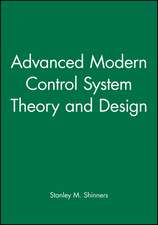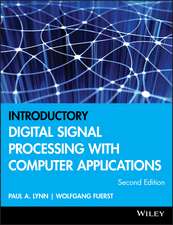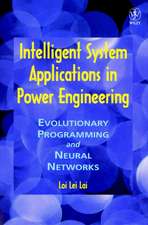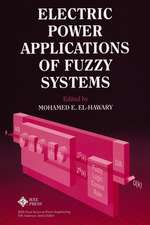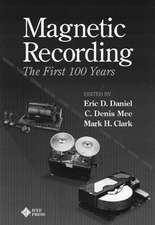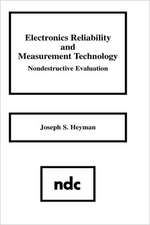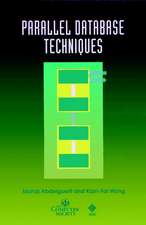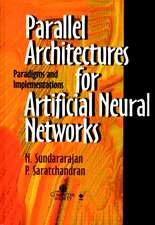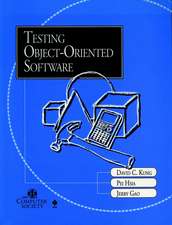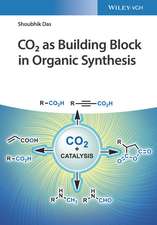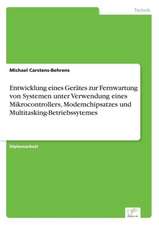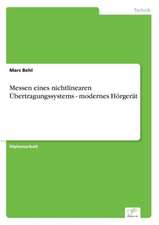Fault Location on Transmission and Distribution Lines – Principles and Applications: IEEE Press
Autor S Dasen Limba Engleză Hardback – 15 dec 2021
This book provides readers with up-to-date coverage of fault location algorithms in transmission and distribution networks. The algorithms will help readers track down the exact location of a fault in the shortest possible time. Furthermore, voltage and current waveforms recorded by digital relays, digital fault recorders, and other intelligent electronic devices contain a wealth of information. Knowledge gained from analysing the fault data can help system operators understand what happened, why it happened and how it can be prevented from happening again. The book will help readers convert such raw data into useful information and improve power system performance and reliability.
Din seria IEEE Press
- 5%
 Preț: 599.39 lei
Preț: 599.39 lei - 20%
 Preț: 684.17 lei
Preț: 684.17 lei - 24%
 Preț: 667.15 lei
Preț: 667.15 lei - 24%
 Preț: 1226.95 lei
Preț: 1226.95 lei - 24%
 Preț: 707.88 lei
Preț: 707.88 lei - 24%
 Preț: 702.63 lei
Preț: 702.63 lei - 24%
 Preț: 617.46 lei
Preț: 617.46 lei - 24%
 Preț: 600.44 lei
Preț: 600.44 lei - 24%
 Preț: 741.54 lei
Preț: 741.54 lei - 24%
 Preț: 706.13 lei
Preț: 706.13 lei - 24%
 Preț: 704.88 lei
Preț: 704.88 lei - 24%
 Preț: 695.87 lei
Preț: 695.87 lei - 24%
 Preț: 618.99 lei
Preț: 618.99 lei - 24%
 Preț: 546.25 lei
Preț: 546.25 lei - 14%
 Preț: 858.78 lei
Preț: 858.78 lei - 20%
 Preț: 446.58 lei
Preț: 446.58 lei - 24%
 Preț: 672.04 lei
Preț: 672.04 lei - 24%
 Preț: 612.66 lei
Preț: 612.66 lei - 24%
 Preț: 572.10 lei
Preț: 572.10 lei - 14%
 Preț: 743.46 lei
Preț: 743.46 lei - 23%
 Preț: 1031.28 lei
Preț: 1031.28 lei -
 Preț: 415.98 lei
Preț: 415.98 lei - 9%
 Preț: 1010.21 lei
Preț: 1010.21 lei - 9%
 Preț: 1499.89 lei
Preț: 1499.89 lei - 9%
 Preț: 806.07 lei
Preț: 806.07 lei - 9%
 Preț: 1069.47 lei
Preț: 1069.47 lei - 9%
 Preț: 1117.45 lei
Preț: 1117.45 lei - 20%
 Preț: 723.20 lei
Preț: 723.20 lei - 9%
 Preț: 923.82 lei
Preț: 923.82 lei - 9%
 Preț: 994.01 lei
Preț: 994.01 lei - 9%
 Preț: 963.51 lei
Preț: 963.51 lei - 9%
 Preț: 1969.97 lei
Preț: 1969.97 lei - 9%
 Preț: 1021.22 lei
Preț: 1021.22 lei - 9%
 Preț: 742.90 lei
Preț: 742.90 lei - 9%
 Preț: 1485.82 lei
Preț: 1485.82 lei - 9%
 Preț: 1020.25 lei
Preț: 1020.25 lei - 9%
 Preț: 930.31 lei
Preț: 930.31 lei - 9%
 Preț: 997.70 lei
Preț: 997.70 lei - 9%
 Preț: 970.56 lei
Preț: 970.56 lei - 9%
 Preț: 781.15 lei
Preț: 781.15 lei - 9%
 Preț: 1162.23 lei
Preț: 1162.23 lei - 9%
 Preț: 1030.34 lei
Preț: 1030.34 lei - 9%
 Preț: 815.85 lei
Preț: 815.85 lei - 9%
 Preț: 1130.31 lei
Preț: 1130.31 lei - 9%
 Preț: 1560.74 lei
Preț: 1560.74 lei - 9%
 Preț: 1289.30 lei
Preț: 1289.30 lei - 9%
 Preț: 1036.75 lei
Preț: 1036.75 lei - 9%
 Preț: 968.96 lei
Preț: 968.96 lei - 9%
 Preț: 1130.63 lei
Preț: 1130.63 lei - 9%
 Preț: 1010.82 lei
Preț: 1010.82 lei
Preț: 781.77 lei
Preț vechi: 859.09 lei
-9% Nou
149.59€ • 163.00$ • 126.05£
Carte tipărită la comandă
Livrare economică 23 aprilie-07 mai
Specificații
ISBN-10: 1119121469
Pagini: 288
Dimensiuni: 170 x 255 x 21 mm
Greutate: 0.65 kg
Editura: Wiley
Seria IEEE Press
Locul publicării:Chichester, United Kingdom
